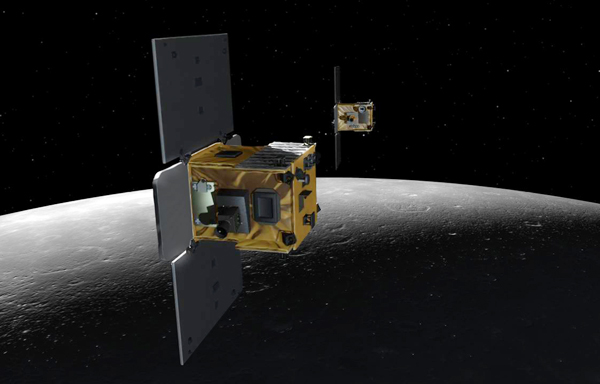- More than 2 years ago
NASA’s twin GRAIL probes are on a crash course to hit the lunar surface on December 17.

The cosmic collision is intentional: Mission engineers need to guide the spacecraft down because they have run out of fuel to keep themselves in lunar orbit. Scientists will be watching until the very end, because how GRAIL hits may yield more discoveries about the moon.
GRAIL consists of two washing machine–sized probes named Ebb and Flow. Launched in September 2011, they arrived in January and completed their main task of mapping lunar gravity between March and May. GRAIL’s discoveries include the fact that the moon’s crust is thinner and more fractured by meteorite impacts than scientists had suspected (SN Online: 12/6/12).
But Ebb and Flow will meet their ends at 5:28 and 5:29 p.m. Eastern time on December 17. NASA will guide them at a very shallow angle into the side of a small mountain, part of the rim of an impact crater. The collision will take place in the dark, but far overhead the Lunar Reconnaissance Orbiter satellite will photograph the crash site before and after the event. By comparing those pictures, scientists will able to see how much of the mountain’s rock was broken up during the crash — and know how intact the lunar crust is at that spot, says the mission’s chief scientist, MIT geophysicist Maria Zuber.
There’s even a small chance the crash will send up a puff of gases liberated from the crust during the impact. “That would be very interesting,” says Zuber. In 1999, astronomers looked anxiously for such signs when the Lunar Prospector spacecraft deliberately crashed in a crater near the moon’s south pole. They saw nothing.
Ebb and Flow will hit about 20 seconds and 20 to 40 kilometers apart, at speeds of about 6,050 kilometers per hour.







